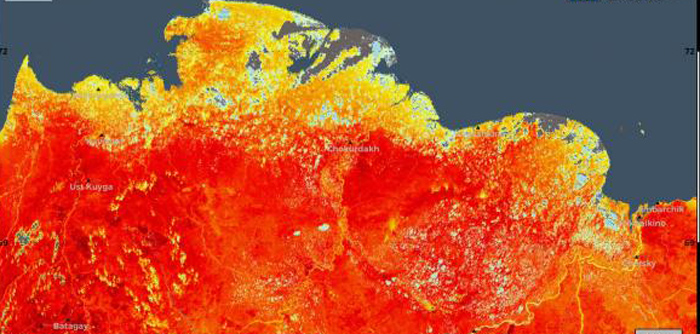The World Meteorological Organization reported that it is seeking to verify a new record temperature north of the Arctic Circle of 38°C. This was recorded on June 20 in the Russian town of Verkhoyansk, against the setting of a prolonged Siberian heatwave and increase in wildfire activity.
The WMO noted that Verkhoyansk, located in the northern part of Republic of Sakha (Yakutia), is in a region of Eastern Siberia which has an extreme very harsh dry continental climate (very cold winter and hot summer).
The Verkhoyansk meteorological station had a previous air temperature record of 37.3°C observed on July 25, 1988, according to scientists German Alekseenkov and Vasily Smolyanitsky at the Arctic and Antarctic Research Institute of the Russian Federal Service for Hydrometeorological and Environmental Monitoring (Roshydromet). The station has provided daily measurements since 1885.
The WMO noted that final information on whether this record maximum is for the whole area of the Arctic northward of the Polar Circle needs to be assessed when more complete weather data is available. Once it receives confirmation of the temperature from Roshydromet, it will then refer the finding for verification by a team of investigators for its Weather and Climate Extremes Archive.
Until now, the WMO has not verified potential records for “highest temperature recorded north of Arctic Circle”. However, this extreme observation has garnered enough interest that it is currently studying the creation of such a new category for the official archive, according to prof. Randall Cerveny, WMO’s special rapporteur on weather and climate extremes and president’s professor of geographical sciences, Arizona State University.
“A WMO fast-response evaluation team has given tentative acceptance of this observation as a legitimate observation, which is consistent with current upper air observations at the time in Siberia,” explained Cerveny.
“This will now be subject to a normal process for a detailed formal review by a panel of WMO atmospheric scientists. It has been an unusually hot spring in Siberia, and the coinciding lack of underlying snow in the region combined with overall global temperature increases undoubtedly helped play a critical role in causing this extreme temperature observation.”
As part of the verification process, WMO is contacting the Russian meteorological agency to collect direct information on the observation such as the actual data, the type of equipment used, the quality-checks and calibration of the instrument, the observation monitoring techniques and the correspondence to surrounding stations, etc.



